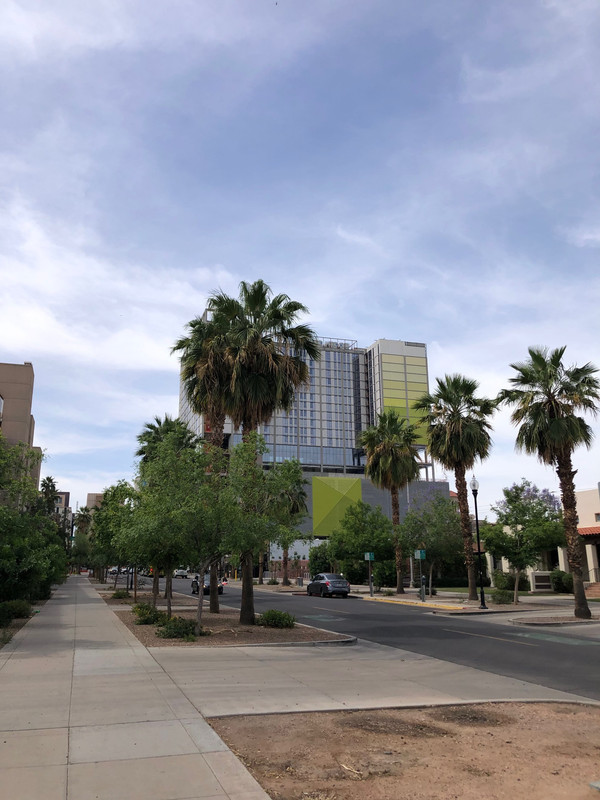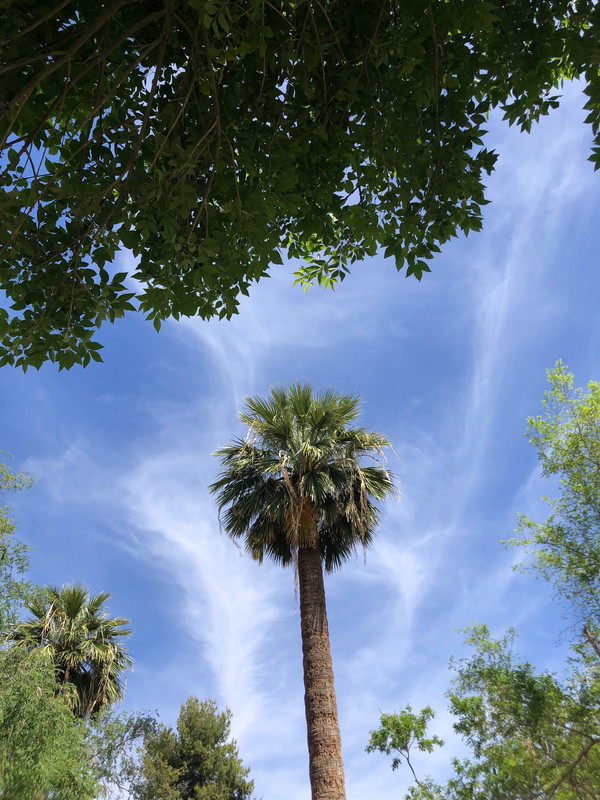August 2022 EcoQuest: Palms on Parade
Join the August EcoQuest: Palms on Parade.
Find and map as many palm trees as possible.
Join the EcoQuest
See them on iNaturalist.
WHAT TO OBSERVE:
Any and all palm trees (Family Arecaceae).

Palm trees have a long history in metro Phoenix and can be met with mixed sentiments. They are an iconic part of the landscape, but are not native and can consume considerable amounts of water. They have been planted for agricultural purposes, like date palms, and for landscaping and oasis resort vibes. Palms can be tricky to identify and can hybridize with one another! Currently, there are nine verifiable species of palm tree in metro Phoenix on iNaturalist, can you find more?

Palm tree fun fact: Arizona is said to have ONE native palm tree, the California fan palm( Washingtonia filifera. The single population grows in the Kofa National Wildlife refuge and is thought to have been started from seeds in bird or animal droppings.

If you see palm trees pruned like this, please know this is NOT a good pruning practice! Palm trees rely heavily on their fronds to make energy, and they typically only make a few fronds at a time. Some only make one to two new fronds a year! Removing living fronds can slow or stop a palm’s growth. Over-pruning palms also makes them less storm tolerant. In addition, climbing spikes should not be used to climb palms to prune them. Climbing spikes wound the palm tree which do not close, inviting insects and pests. If you must, only remove dead or discolored fronds, never living fronds. Do not remove fronds that have a horizontal or upward orientation.
Observing palm trees in metro Phoenix can help us understand their population and distribution, and we can potentially learn about their water use in our desert city.

EcoQuests are month-long challenges that are part of the larger Metro Phoenix EcoFlora project. Learn more by visiting our website.
Look for project happenings, EcoQuest announcements and more in the newsletter, project journal and on social media.
Sign up for the newsletter, The Metro Phoenix Field Guide.
Let's be social on Instagram, Facebook, and Twitter.

Please do not observe indoor houseplants or pets.
For your own safety and the protection of plants and wildlife, do not trespass when making observations. Please follow all posted rules and guidelines in parks/preserves and do not enter private property.
Do not remove or move natural materials (plants, animals, rocks).
Respect wildlife (do not touch, feed, or disturb animals and keep a safe distance).
Observe COVID-19 Guidelines/Recommendations.
This is a great opportunity to observe and appreciate nature in our neighborhoods as we all navigate the complications of COVID-19. It is imperative that you follow COVID-19 guidelines/recommendations (wear a mask, practice physical distancing and wash your hands).
Do what’s best for you and your community.
For more COVID-19 information and guidelines, visit:
https://www.inaturalist.org/projects/city-nature-challenge-2020/journal/31768-cnc-covid-19
https://www.inaturalist.org/blog/31664-exploring-nature-when-you-re-stuck-at-home
Arizona Office of Tourism: Responsible Recreation in AZ
https://tourism.az.gov/responsible-recreation-across-arizona





Comments
Add a Comment